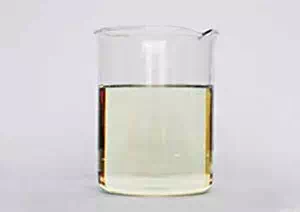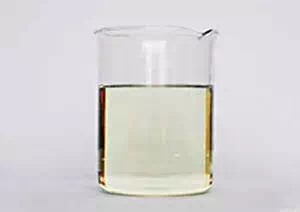All Categories


Methylisothiazolinone CAS 2682-20-4 2-Methyl-4-Isothiazoline-3-one
Chemical Name: 2-Methyl-4-isothiazolin-3-one,Molecular formula: C₄H₅NOS,Molecular weight: 115.15 g/mol
CAS : 2682-20-4
Formula : C4H5NOS
Mol. wt. : 115.15
EINECS : 220-239-6
| CAS | 2682-20-4 |
| Molecular formula | C4H5NOS |
| Molecular weight | 115.15 |
| EIENCS | 220-239-6 |
| Form | neat |
| Melting point | 254-256 °C(lit.) |
| boling point | bp0.03 93° |
| Density | 1.25 (14% aq.) |
| Solubility | Chloroform, Ethyl Acetate |
| PKA | -2.03±0.20(Predicted) |
| Color | Yellow |
| Storage temp |
Chemical Name: 2-Methyl-4-isothiazolin-3-one
Molecular formula: C₄H₅NOS
Molecular weight: 115.15 g/mol
CAS Number: 2682-20-4
EINECS number: 220-239-6
Appearance: White to light yellow crystalline powder or transparent liquid (industrial products are often in aqueous solution)
Physical properties:
Melting point: 254-256℃
Density: 1.25 g/cm³ (14% aqueous solution)
Flash point: 64.3℃ (Flammable)
Solubility: Readily soluble in water (489 g/L, 20℃), ethanol and chloroform; Slightly soluble in non-polar solvents
Chemical properties:
Heat-resistant (≤120℃), wide applicable pH range (2.0-12.0)
It is sensitive to air and should be stored in a sealed container away from light
Main uses
Daily chemicals and cosmetics
Highly effective preservative, used in shampoos, facial cleansers, wet wipes, etc., inhibiting bacteria, fungi and molds.
Maximum allowable concentration: 0.01% (strictly restricted in China, the European Union, etc.).
Industrial field:
Papermaking coatings, oilfield water injection: sterilization and mold prevention;
Coatings and adhesives: Extend shelf life and prevent microbial contamination;
Industrial cooling water: Replace chlorine-containing biocides and reduce corrosiveness.
Regulatory restrictions
Cosmetics
The EU prohibits its use in leave-on products (such as emulsions), and only allows its use in rinse-on products.
Products containing MIT must be labeled as "Containing sensitizers" (CLP regulation).
Industrial products
The US EPA limits the concentration of MIT in industrial cooling water to no more than 15 ppm.
Air exposure limit in the workplace: ≤0.5 mg/m³ (OSHA standard).
Health risk
Skin sensitization
Strong sensitizers are prone to cause allergic contact dermatitis (ACD), especially on the face and hands. Eu statistics show that its sensitization rate rose from 3.5% in 2010 to 15.2% in 2019.
Mechanism: It binds to the thiol groups of skin keratin and activates the T-cell immune response.
Acute toxicity:
Oral LD₅₀ in rats was 230 mg/kg (OECD 423 standard), which was of moderate toxicity.
It has a strong irritant effect on the eyes and respiratory tract (0.1% solution can cause corneal opacity).
Neurotoxicity
Experiments have shown that long-term exposure to low concentrations (0.3-3 μM) can inhibit the growth of neuronal axons and dendrites and interfere with local adhesion kinase (FAK) signals.
Environmental risk
Aquatic toxicity
Highly toxic to fish and algae (96h-LC₅₀ < 0.12 mg/L), far exceeding the ecological limit of the European Union (0.01 mg/L).
Environmental hazard identification: R50 (Extremely toxic to aquatic organisms), R50/53 (Long-term water body hazard).
Protective measures
Operation requirements: Wear impermeable gloves, goggles, N95 masks and gas masks.
Leakage treatment: Use sand to adsorb and prevent it from entering water bodies.
* Prompt reply and 24 hours online, professional team to provide best price and high quality product.
* Sample testing support.
* Every batch of products will be tested to ensureits quality.
*The packing also can be according the customers` requirment.
*Any inquiries will be replied within 24 hours.
*we provide Commerical Invoice, Packing List, Bill of loading, COA , Health certificate and Origin certificate. If your markets have any special requirements, let us know.